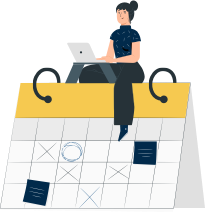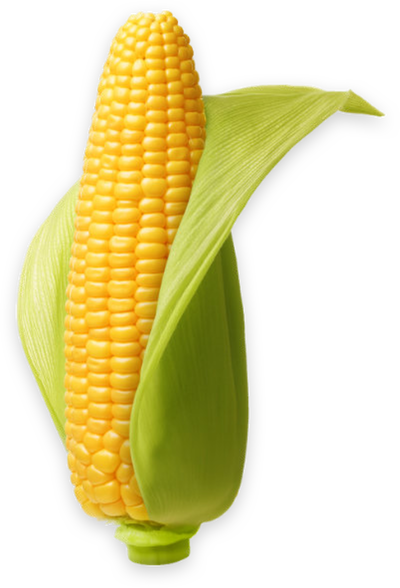user acceptance of iot solutions

a farmer's
perspective
While smart farming can be essential for attaining sustainable goals, farmers could be risk averse and conservative in changing farming practices. Yet, as more IoT solutions are adopted in agri-food, the more interesting it becomes to follow innovation and to maintain a competitive position. Our expectation is that the user acceptance level of IoT solutions will increase over the next years. Next to studying the user’s experience regularly and using their feedback, keeping the impact on the farmer in mind is important. How does testing align with activities on the farm and what effort is needed? Engaging with farmers during IoT product development is needs time to allow for learning and change.
Impact
Understand what’s in it for the farmer and make sure that communication with end users addresses that.
It is recommended to engage younger farmers to showcase best practices as well as matching them with less experienced or older farmers during development to share knowledge. Other recommendations are to take language barriers into account and to start user acceptance testing early in the project. Insights into the use case characteristics that play a role in their business models are expected to be presented in Deliverable 4.5 Overall lessons learned regarding business model (to be finalized in March, 2021).
Effort
Consider the time investment needed by the farmer, because farm operations are key. It can be difficult to free up time (availability) and multiple users could be involved. There could be a trade-off between getting high quality of evidence and impacting user productivity too much.
For policy makers, we recommend efficient exploitation of the enormous potential of digitization and data driven operation in agri-food sector. In this digital transformation, policy should stimulate collaboration among chain partners for innovative solutions that contribute to sustainable solutions.
Activity
While some may say farming is not the forerunner of innovation and high tech adoption, it will change radically to be able produce sustainably, following the successful examples that IoF2020 use cases demonstrate.

Even farming, which is not famous in innovativeness and high tech adoption, will change radically to produce sustainably, taking successful examples that IoF2020 use cases demonstrate. For this change, the application of professional user acceptance testing in every research project that intends to bring products or solution to the market is key.
Change
Consider the entire context of the farm to have the farmer on board. Pay attention to change management aspects to make sure the farmer gets time to get used to new ways of working throughout the project.

Box 1
The three phases of value sensitive design
Value Sensitive Design (VSD) consists of the following three phases, therefore it is also called the tripartite methodology (Friedman & Hendry, 2019):
- A conceptual research which includes philosophically based analysis of the central constructs and issues to be investigated. What values do we consider important? How should we make a trade-off between competing values such as access versus privacy, or security versus trust?
- An empirical study which focuses on the human response to the technical artifact and the social context in which the technology resides.
- A technical investigation focused on the design and performance of the technology itself, which concerns both existing technologies and the design of new technical systems.
VSD does not replace but is complementary to the existing user design process of a technology. Like Umbrello and De Bellis (2018: 14) stated: “Value sensitive design can and should be integrated and take into account existent design approaches employed by engineers and designers of intelligent agents."
The application of VSD has resulted in actual changes in or adjustments to the technology design (Winkler and Spiekermann, 2018). There are many examples of technology development projects that used the full tripartite method. Few projects also iterated between the three types of research. By examining the way these projects have applied the VSD method, technology developers can learn how to apply the VSD method for their own technology designs.
Box 2
Example of an iterative Value Sensitive Design process
making a mobility app for blind people
Conceptual research
In the conceptual research the researchers identified the key stakeholders – both direct and indirect stakeholders - related to applications that support blind and deafblind people in using public transport. Then researchers made a first identification of values at stake in the domain. For this, the researchers used the UN Convention on the Rights of People with Disabilities. They also found other values that play a role such as security, trust and privacy. Safety turned out to be very important for the potential users.
Empirical study (1): identifying values
In this phase the researchers conducted 30- to 45-minutes semi-structured interviews with 6 blind adults (2 men and 4 women). The 6 participants gave the highest priority to the values ‘independence’ and ‘trust’. They expressed great concern about ‘safety’. The participants often asked other people for information about their environment, but people who give reliable information are not always present. They preferred to access information on their iPhone or GPS system (in accordance with the importance of independence). But getting the information by speech can be distracting and unsafe or difficult to hear when they are in the bus or train. The present professional specialized supporting technology was expensive and inconvenient to carry.
The researchers also conducted 30-minute semi-structured interviews with 7 deafblind adults (4 men, 3 women) and an instructor who provides orientation and mobility training to deafblind people. As with the blind participants, the values of independence, trust and security were prioritized/highlighted in the interviews. All deafblind participants and the instructor associated access to information with the values security and trust. This information is about a person's physical environment (e.g. trees in the middle of sidewalks), bus arrival times, upcoming bus stops and communication with the driver.
The researchers also included bus drivers in the conceptual study because they are the main indirect stakeholders for the technology application. The bus drivers who accidentally transport the blind and deafblind are responsible for the safe arrival at their destination. The researchers sent a survey on drivers' opinions and values to 500 bus drivers. The surveys were completed anonymously. The response was 47%. The survey mainly focused on real-time switching information tools. Part of the survey included questions about passengers who are blind or deafblind. The researchers coded the answers by grouping them into positive, neutral and negative feelings about the carriage of blind or deaf-blind passengers. With few exceptions, responses were very positive.
Technical investigation
Assess current technology
Already in the former empirical research phase, the researchers described current technology, including GPS systems, Braille annotation devices and wearable communication devices especially for deafblind people. These technologies give access to information that provides a certain degree of independence for blind and deafblind people. Other values that were important to the participants were not yet supported by current technology, such as affordability and comfort. Blind participants said that information in Braille had several advantages over information in speech. But deafblind participants have no speech and therefore need Braille devices.
The MoBraille Framework
To better support the identified values, the researchers designed a system that allows blind and deafblind people to access information via Braille on a small, regular smartphone. The system was called MoBraille ("mobile braille").
GoBraille for the blind in public transport
The researchers also developed a MoBraille application (called GoBraille) for the blind that enabled them to get information about (1) the nearest intersection and address, (2) real-time bus arrival for nearby stops and (3) non-visual landmarks and specific location information about nearby stops. In addition, the researchers have also developed a version of GoBraille for deafblind people that gives them real-time information about the bus arrival at his or her current stop. Based on iterative feedback from a deafblind participant, the researchers simplified the interface for deafblind people.
Empirical study (2): evaluating the designed technology applications
Evaluation of GoBraille for the blind
The researchers had GoBraille assessed by 10 blind adults who regularly rode the public transport bus. The evaluation focused on the new aspects of the GoBraille. The evaluation was conducted on a sidewalk of a busy street and near several bus stops. After the researchers explained how the GoBraille application worked, the 10 blind participants were given several tasks to perform using the application. When the tasks were completed the researchers conducted a 20-minute semi-structured interview with the 10 participants. The aim of the interview was to determine how the access to GoBraille’s various information sources would affect a participant's sense of independence and security when using public transportation. The researchers wanted to know how the input and output in Braille interacted with the system. It turned out that the participants were very satisfied with the system.
Co-design with a blind-deaf person
The researchers developed a version of GoBraille for deafblind people by working with a deafblind person who used the bus regularly. This happened in 3 sessions of 1.5 hours each. In each design session several problems emerged. The lessons the researchers learned from this co-design process have been translated into three general guidelines that can be used for designing such applications.
Source: Azenkot, S., S. Prasian, A. Borning, E. Fortuna, R.E. Ladner, J.O. Wobbrock, 2011. Enhancing Independence and Safety for Blind and Deaf-Blind Public Transit Riders. CHI 2011. Vancouver, BC, Canada.